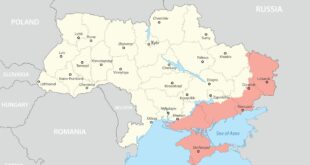However, over the last 20 months, the size and scope of Israeli military campaigns have gone beyond the frontiers of Gaza and the occupied West Bank to venture into some other nations in the Middle East. The government of Israel has engaged in assaults in Lebanon, Syria, Yemen, and Iran, on top of continuing its activities in the Palestinian territories. The sharp shifts illustrate a wider regional crisis and escalation of the Israeli military presence on various fronts, leading to dismal humanitarian implications.
The largest military offensive remains in Gaza and the occupied West Bank. More than 18,000 individual Israeli aggressions have already been registered in these regions with disastrous human casualties. During these processes, there were at least 56,000 Palestinians who were killed and over 131,000 who were injured. Infrastructure with civilians has been destroyed, such as homes, schools, hospitals, and places of worship. Neighborhoods have been destroyed wholesale and families eliminated. The extent to which damage has been done has created a sense of alarm among humanitarian agencies, who are seeking global interference to stop the misery and offer succor to the victims.
The bloodshed has, however, not been limited to the Israeli-Palestinian battlefield. In a nearby country, Lebanon, it has been estimated that there were over 15,000 Israeli military operations in the past 20 months. The occurrence of these attacks has led to the death of more than 20,000 people, which is a big and worrying development in the region. The areas targeted have been many times parts of southern Lebanon where Hezbollah is well established, but there are also attacks on civilian areas. Having already experienced economic collapse and political paralysis, these attacks have only made Lebanon more tumultuous.
In Syria, an old dagger in the back of Middle Eastern geopolitics, Israeli military action has become back in full swing. During the last six months alone, Israel has run 200 attacks within the territory of Syria. Military analysts say most of these strikes included Iranian-backed militias and weapons depots in Syria, although Syrian government facilities and even civilian areas have also been hit. These attacks have gone on to worsen the situation of the Syrian people, who are already displaced and thus living in deplorable conditions because of the prolonged civil war.
Israel has launched 39 known attacks in Yemen, a country engaged in its own ongoing humanitarian crisis, where destruction has been concentrated on the country’s rupture. These also consist of airports, seaports, and strategic military facilities. This has also further incapacitated the already weak transportation and supply systems in Yemen. The targeted timing of such attacks, as well as their clear aims, indicates that a certain attempt was made to interfere with any possible threat that Iranian-backed Houthi armies cause should they express vocal support for Palestinians and criticism of Israeli policies at any time.
The attacks on the territory of Iran especially increase sharply and are probably the most alarming. Only between June 13 and June 23, 146 military operations are reported in Israel and Iran. The number of Iranians killed by such attacks reached at least 606 people, including the children, and at least 5,000 were seriously injured. The intensity of these attacks and the volume of them in such a short span of time are highly alarming as the ramping up of violence between the two states. Iran alleged that it is engaging in the attacks of military installations, but also civilian centers, and this poses the question of the validity and ethical promptness of these operations according to international law.
In fact, the creeping expansion of the Israeli military operations represents a strategic change that seems to shift to preemptive and cross-border ones, which are usually presented as being against the regional proxies and infrastructures of the Iranian nation threatening Israeli national security. Yet, what is a huge human toll, and attacks on measures of civilian infrastructure present serious kinds of legal and moral concerns. Critics point out that the excessive character of the attacks, particularly in Gaza and the occupied West Bank, could amount to the commission of crimes against international law, including war crimes.
Such developments have fanned regional tensions, with the risk of a wider war increasing both in the minds of analysts and people around the Middle East. The fact that it targets several sovereign states, including those who are not in an active conflict with Israel, increases the risk of a possible retaliatory strike or overall confrontation in the region. It is providing international agencies and human rights activists the opportunity to take immediate diplomatic solutions, ceasefire negotiations, and independent inquiry to determine the extent and pattern of these attacks.
 Geostrategic Media Political Commentary, Analysis, Security, Defense
Geostrategic Media Political Commentary, Analysis, Security, Defense





